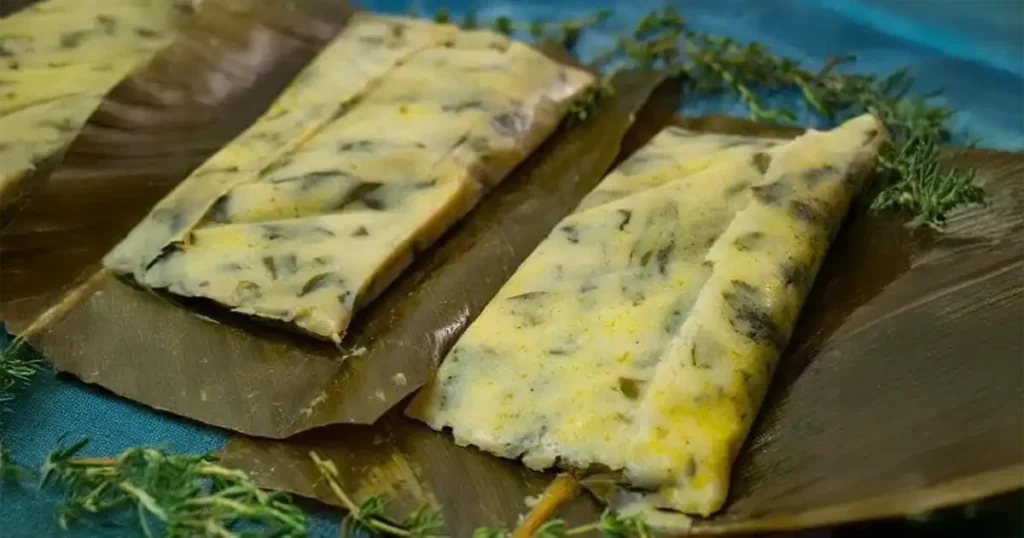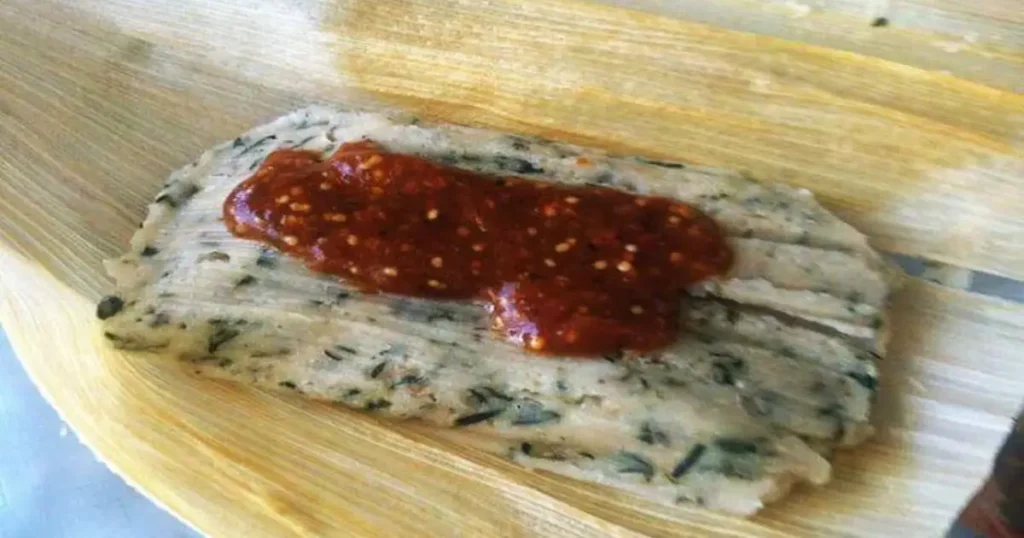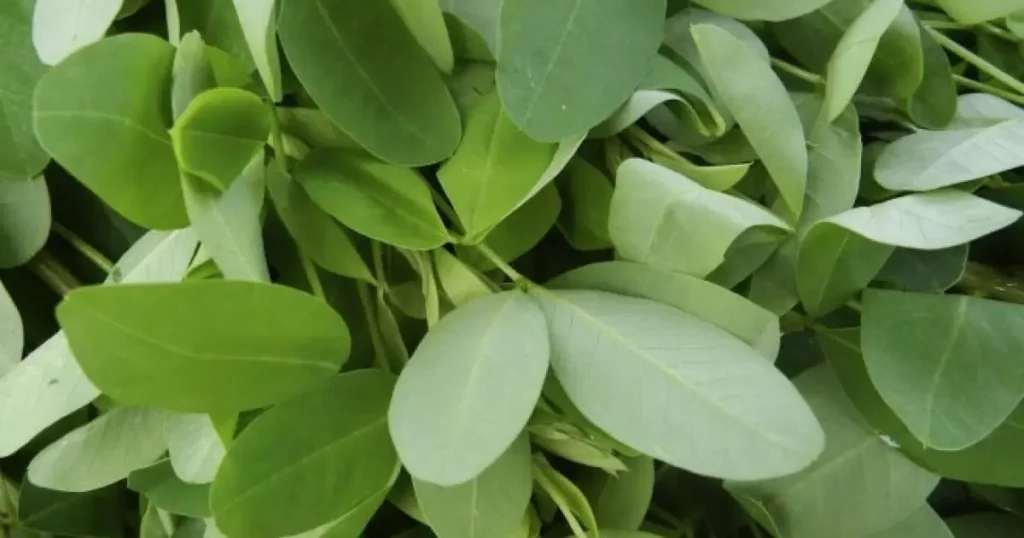Tamal de Chipilín: Guatemala's Delicious Leafy Corn Treat

Guatemala, a land of vibrant culture, ancient traditions, and breathtaking landscapes, offers an equally captivating culinary scene. Among its many treasures, the tamal stands as a cornerstone of Maya heritage and a beloved staple across the nation.
While various tamales tantalize the taste buds, the Tamal de Chipilín holds a special place in the hearts and on the tables of Guatemalans. This humble yet flavorful dish, infused with the unique taste of the chipilín leaf, offers a delicious journey into the heart of Guatemalan home cooking and tradition.

September is here, and just like last year, we wanted to share with you our typical Guatemalan dishes. This recipe is for Tamalitos de Chipilín. A tamal is a traditional Latin American dish made of masa (corn dough) which is wrapped in corn husks or plantain leaves.
This wrapping is discarded to enjoy the tamal. They can be filled with chicken or pork meat, loroco, chipilín, and they are seasoned with a delicious red sauce called recado. While this provides a wonderful starting point, the world of the Tamal de Chipilín is rich and deep, warranting a closer exploration.
Join us as we unwrap the story behind this iconic dish, from the fields where chipilín grows to the festive tables it graces. We'll delve into its ingredients, the art of its preparation, its cultural significance, and why the Tamal de Chipilín is more than just a meal—it's an experience.
What Exactly is Chipilín? The Star Ingredient

Before we dive into the tamal itself, let's get acquainted with its star ingredient: chipilín. Chipilín (Crotalaria longirostrata) is a perennial legume native to Mexico and Central America, including Guatemala. It’s a leafy green shrub whose leaves and tender young shoots are highly prized in regional cuisine.
Flavor Profile and Aroma
Chipilín leaves possess a distinctive and somewhat earthy flavor, often described as a unique blend of spinach and green beans, but with a more pronounced, slightly tangy, and subtly floral or nutty note. The aroma is equally unique and becomes more apparent when cooked. For those unfamiliar, the taste is quite characteristic and is central to the identity of dishes like the Tamal de Chipilín. It doesn't have the bitterness of some other greens; instead, it imparts a pleasant, savory depth.
Nutritional Value
Beyond its unique taste, chipilín is a nutritional powerhouse. It is rich in:
- Protein: As a legume, it's a good source of plant-based protein.
- Vitamins: Particularly high in Vitamin A, Vitamin C, and B vitamins like folate.
- Minerals: Contains significant amounts of iron, calcium, and potassium.
- Fiber: Beneficial for digestive health.
Its nutritional profile has made it a valuable food source in Central America for centuries, contributing essential nutrients to the traditional diet.
Cultivation and Availability
Chipilín grows well in tropical and subtropical climates. In Guatemala, it's commonly found in home gardens, local markets (mercados), and is also cultivated on a larger scale. Fresh chipilín leaves are often sold in bundles. While it can sometimes be found dried or frozen in international markets catering to Central American communities, fresh is always preferred for the best flavor in a Tamal de Chipilín.
Deconstructing the Tamal de Chipilín: A Symphony of Simple Ingredients
The beauty of the Tamal de Chipilín, often referred to as "tamalitos de chipilín" due to their typically smaller, more snackable size compared to other Guatemalan tamales like the Paches or Tamal Colorado, lies in its simplicity and the perfect marriage of its core components.
The Masa: Corn's Divine Dough

The foundation of any tamal is masa, a dough made from nixtamalized corn. This ancient process, developed by Mesoamerican civilizations, involves soaking and cooking dried corn kernels in an alkaline solution (usually water with cal, or slaked lime). Nixtamalization softens the corn, makes it easier to grind, and critically, unlocks essential nutrients like niacin, making the corn more nutritious.
For Tamal de Chipilín, the masa is typically:
- Fine-textured: Achieved by grinding the nixtamalized corn finely.
- Seasoned: Salt is a must. Sometimes, a bit of oil or lard (manteca) is added for richness and a softer texture, though some versions are lighter.
- Infused with Chipilín: The fresh chipilín leaves are thoroughly washed and then mixed directly into the masa, distributing their color and flavor throughout the dough. The density of leaves can vary based on personal preference, but a generous amount ensures every bite is herbaceous and delightful.
The Chipilín Leaves: More Than Just Flavor
As discussed, the chipilín leaves are the defining ingredient. They are typically chopped or left whole and incorporated raw into the masa. During the steaming process, they cook through, releasing their distinct aroma and melding their flavor with the corn dough. Their vibrant green color also gives the cooked tamal a visually appealing speckled appearance.
The Wrapping: Tusas (Corn Husks)
Unlike the larger, more elaborate tamales colorados or negros that are often wrapped in plantain leaves, Tamalitos de Chipilín are traditionally encased in tusas (dried corn husks).
- Preparation: Dried corn husks are soaked in warm water until they become pliable. This makes them easy to fold and prevents them from cracking.
- Purpose: The husks serve multiple purposes:
- They act as a natural cooking vessel, holding the masa mixture together.
- They protect the tamal from direct contact with steam, allowing it to cook gently and evenly.
- They impart a subtle, sweet corn aroma to the tamal during steaming.
- They make for a convenient, biodegradable "plate" from which to eat the tamal.
Optional Enhancements: Cheese and Meats
While the most traditional Tamal de Chipilín focuses purely on the masa and chipilín, variations exist:
- Queso (Cheese): Some recipes call for adding a small piece of fresh, crumbly Guatemalan cheese (like queso fresco or queso de capas) into the center of the tamal before wrapping. This adds a salty, creamy counterpoint to the earthy chipilín.
- Meat: Though less common for the specific "tamalito de chipilín" which is often vegetarian, sometimes small shreds of cooked chicken or pork might be incorporated, particularly if making a more substantial version. However, the classic features the chipilín as the primary flavor.
The Art of Crafting Tamalitos de Chipilín: A Step-by-Step Culinary Journey
Making Tamalitos de Chipilín is a labor of love, often a communal activity where families gather to share in the process. While recipes can vary slightly from household to household, the fundamental steps remain consistent.
Ingredients:
- 4 cups Masa Harina (corn flour for tamales) or freshly ground nixtamalized corn
- 3 cups warm water or chicken broth (approximate, adjust for masa consistency)
- 1 cup lard or vegetable oil (optional, for richer tamales)
- 1.5 to 2 teaspoons salt (or to taste)
- 2 cups fresh chipilín leaves, washed thoroughly and roughly chopped (or more, to taste)
- 30-40 dried corn husks (tusas), plus extra for lining the steamer
- Optional: 1 cup crumbled queso fresco or small cubes of a firm white cheese
Equipment:

- Large mixing bowl
- Steamer pot (tamalera) or a large stockpot with a steaming rack
Instructions:
- Prepare the Corn Husks:
- Separate the dried corn husks. Remove any silk or debris.
- Place the husks in a large bowl or sink and cover them with hot water. Let them soak for at least 30-60 minutes, or until they are soft and pliable. Weigh them down with a plate if necessary to keep them submerged.
- Prepare the Chipilín Leaves:
- Carefully pick the chipilín leaves from the thicker stems. Discard any wilted or discolored leaves.
- Wash the leaves thoroughly in cool water to remove any dirt or grit.
- Roughly chop the leaves. Some prefer to leave smaller leaves whole. Set aside.
- Make the Masa:
- In a large mixing bowl, combine the Masa Harina with the salt.
- If using lard or oil, you can beat it separately until fluffy before incorporating it into the dry ingredients, or simply add it now.
- Gradually add the warm water or broth to the Masa Harina mixture, kneading with your hands until a soft, moist dough forms. The consistency should be similar to thick cake batter or smooth peanut butter – spreadable but not runny. If it's too dry, add a little more liquid; if too wet, add a bit more Masa Harina.
- Taste Test: Some cooks will take a tiny pinch of the raw masa to check the salt level. Adjust if necessary.
- Gently fold the prepared chipilín leaves into the masa until they are evenly distributed.
- Assemble the Tamales:
- Select a pliable corn husk. Pat it dry slightly.
- Lay the husk flat, with the pointed end facing away from you.
- Spread about 2-3 tablespoons of the chipilín masa mixture in the center of the wider part of the husk, forming a rectangle about 1/4 to 1/2 inch thick. Leave a border around the edges.
- Optional Cheese: If using cheese, place a small amount in the center of the masa.
- Fold one long side of the husk over the masa, then fold the other long side over it, overlapping slightly.
- Fold the pointed, narrow bottom end of the husk up, towards the center of the tamal. This creates a sealed bottom. The top remains open.
- Some people tie a thin strip of corn husk around the tamal to secure it, but this is often not necessary for tamalitos de chipilín if folded correctly.
- As you assemble each tamal, stand it upright (open end up) in a tray or on a baking sheet to prevent the filling from spilling.
- Steam the Tamales:
- Prepare your steamer pot. Add water to the bottom section, ensuring it stays below the level of the steamer rack.
- Line the bottom of the steamer basket with a layer of leftover corn husks. This prevents the tamales from sticking and helps with even steaming.
- Carefully arrange the assembled tamales upright in the steamer basket, open end facing up. Pack them snugly but not too tightly, as they need space to expand slightly. You can add more corn husks around and between them to help them stay upright.
- Cover the tamales with another layer of corn husks and then with a clean, damp kitchen towel before placing the lid on the pot. This helps trap the steam.
- Bring the water to a boil over high heat. Once boiling, reduce the heat to medium-low to maintain a steady simmer and steam.
- Steam the tamales for approximately 1 to 1.5 hours. The cooking time can vary depending on the size of the tamales and the steamer.
- Keep an eye on the water level in the steamer and add more boiling water if necessary to prevent it from drying out.
- Check for Doneness:
- To check if the tamales are done, carefully remove one from the steamer. Let it cool for a few minutes.
- A tamal is cooked when the masa pulls away easily from the corn husk and is firm to the touch. If the masa sticks or seems mushy, they need more steaming time.
- Rest and Serve:
- Once cooked, turn off the heat and let the tamales rest in the steamer with the lid on for at least 15-20 minutes before serving. This allows them to firm up further.
- Serve the Tamalitos de Chipilín warm. Diners unwrap their own tamales at the table. They are delicious on their own or can be accompanied by a dollop of Guatemalan crema (sour cream) or a simple tomato salsa.
The Cultural Tapestry: Tamal de Chipilín in Guatemalan Life
The Tamal de Chipilín is more than just sustenance; it’s woven into the cultural fabric of Guatemala.
Everyday Delicacy and Celebratory Fare
While some elaborate tamales are reserved for major holidays like Christmas or Easter, Tamalitos de Chipilín are enjoyed more frequently. They can be a light lunch, a satisfying snack, or part of a larger meal. Their relative simplicity makes them accessible for everyday enjoyment.
However, they also feature prominently during specific celebrations. As mentioned in the introductory snippet, September, which marks Guatemala's Independence Day (September 15th), is a time when traditional foods are highlighted, and Tamalitos de Chipilín often grace the festive tables. They are a taste of home, tradition, and national pride.
Regional Variations and Family Recipes
While the core concept of masa and chipilín wrapped in corn husks is consistent, you'll find subtle variations across different regions of Guatemala and even from family to family. Some might add a specific local spice, vary the amount of chipilín, or have a unique folding technique passed down through generations. These nuances are part of what makes Guatemalan cuisine so rich and diverse.
A Connection to the Land and Ancestral Traditions
Corn, the base of the tamal, is sacred in Mayan cosmology and has been a staple food in the region for millennia. The use of native plants like chipilín further strengthens the connection to the local environment and ancestral culinary practices. Making and eating Tamales de Chipilín is a way of participating in a tradition that stretches back centuries, honoring the ingenuity of those who first combined these humble ingredients into such a satisfying dish.
Communal Cooking and Shared Joy
The process of making tamales, including Tamalitos de Chipilín, is often a communal affair. Families and friends gather, with each person taking on different tasks – preparing the husks, mixing the masa, assembling the tamales. This collaborative effort transforms cooking into a social event, filled with conversation, laughter, and the passing down of culinary knowledge from older to younger generations. The shared joy of creating and then eating these tamales strengthens community bonds.
Enjoying Tamal de Chipilín: A Guatemalan Experience
For visitors to Guatemala, trying an authentic Tamal de Chipilín is a must.
- Where to Find Them: Look for them at local comedores (small, family-run eateries), street food stalls, and in municipal markets. Often, vendors will specialize in tamales, and you might hear them calling out their wares. Some higher-end restaurants focusing on traditional Guatemalan cuisine will also feature them.
- How They Are Served: They are typically served hot, straight from the steamer. You unwrap the corn husk yourself, using the husk as a makeshift plate.
- What to Expect: Expect a soft, savory corn dough infused with the unique, herbaceous flavor of chipilín. If cheese is included, it will add a pleasant salty tang.
Beyond Guatemala: Chipilín's Reach
While chipilín is particularly prominent in Guatemala and El Salvador (where it's famously used in pupusas con chipilín), its use extends to other parts of Central America and Southern Mexico. The Tamal de Chipilín itself, or very similar variations, can be found in these neighboring regions, showcasing shared culinary traditions.
Why the Tamal de Chipilín Endures
The enduring appeal of the Tamal de Chipilín lies in its:
- Unique Flavor: The taste of chipilín is truly distinctive and cherished.
- Simplicity: Despite the labor involved, the ingredient list is relatively simple, highlighting the quality of the corn and the fresh leaves.
- Cultural Significance: It represents a deep connection to heritage, family, and the Guatemalan land.
- Comfort: Like many beloved traditional foods, it offers a sense of comfort and nostalgia.
The Tamal de Chipilín is a testament to the Guatemalan ability to transform simple, local ingredients into culinary delights that nourish the body and soul. It's a taste of tradition, a celebration of nature's bounty, and an invitation to experience the authentic flavors of this beautiful Central American nation. Whether enjoyed at a bustling market, a family gathering, or carefully crafted in your own kitchen, this leafy green tamal is sure to leave a lasting impression.

Leave a Reply